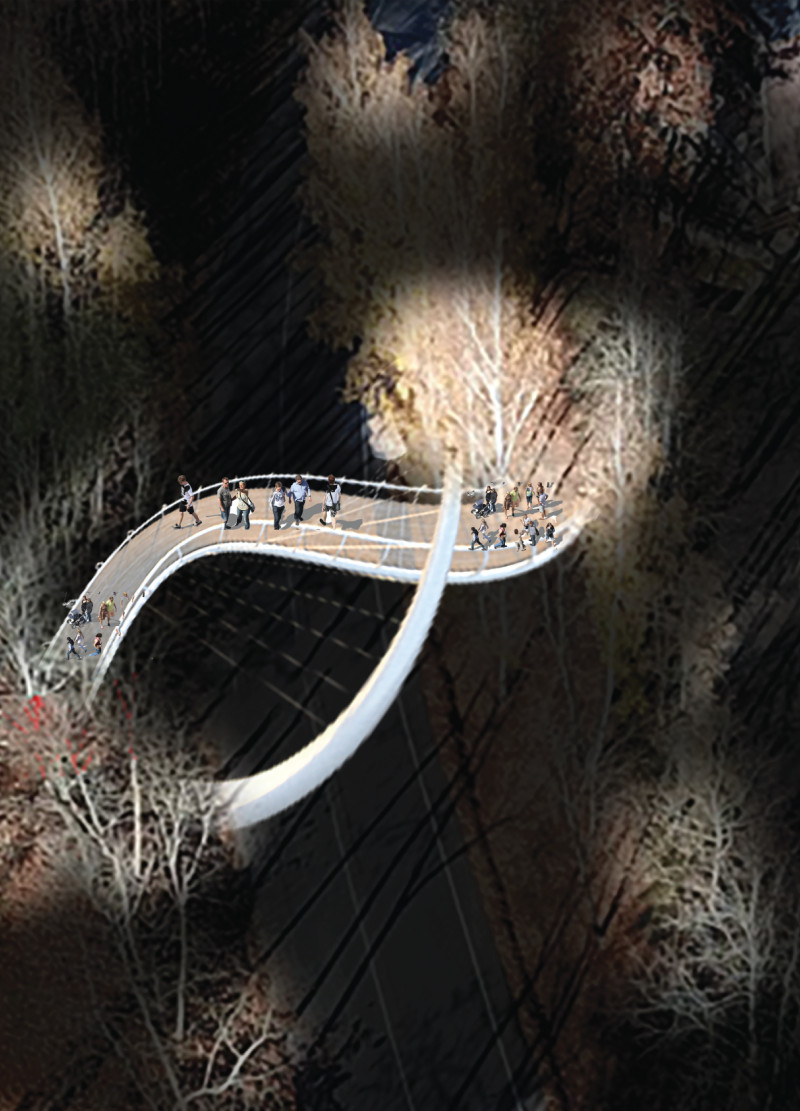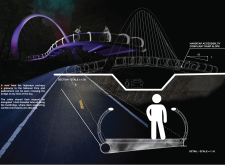5 key facts about this project
The footbridge in Gauja National Park is designed to serve as a pathway for pedestrians while enhancing the surrounding landscape. Located within a scenic setting, the bridge features a design that blends with its natural environment. Its elegant shape reflects a careful consideration of form and function, creating a visual flow that connects users to the beauty of the park.
Structural Integrity
The structure uses a spiral form to manage forces effectively. This shape allows for the handling of both compression and tension. Compression is directed along the spiral, while tension is managed by a series of cables supporting the bridge deck. Together, these elements ensure that the bridge remains stable and well-positioned within the park setting.
Functional Design Elements
The elevation of the footbridge showcases a spiral arch, drawing inspiration from traditional architectural forms like domes and arches. This shape helps distribute loads evenly and reinforces the bridge’s structure. The axonometric view of the bridge reveals how its design invites people to walk across it, creating a notable experience in the process.
Accessibility Considerations
A ramp providing access for individuals with disabilities highlights the design’s focus on inclusivity. This thoughtful element allows all visitors to enjoy the natural beauty of the park, ensuring that everyone can experience the bridge and its surrounding area comfortably.
The bridge’s cable-stayed structure includes an elongated tube supported by cantilevered beams. This arrangement enhances both the visual appeal and the stability of the design. The combination of these structural components contributes to a harmonious presence that blends with the natural landscape of Gauja National Park.






















































